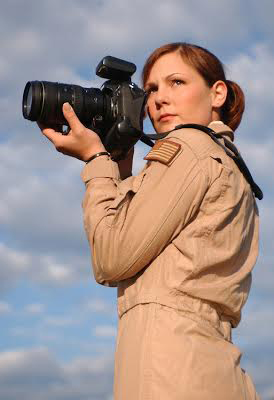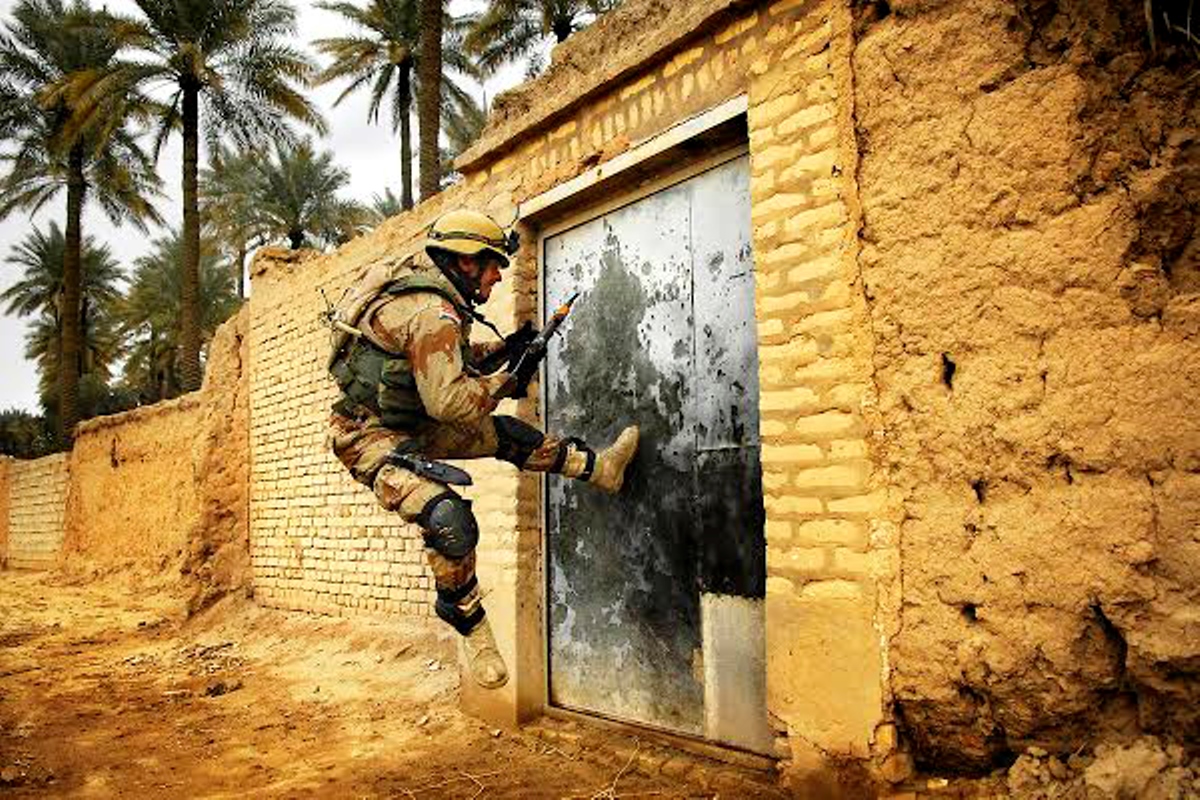Former military combat photographer is MC’s artist in residence

Maryville College hosted Stacy Pearsall as part of their annual artist in residence program the week of March 24-28. The former military combat photographer spent a week on campus teaching students and the community about her work in the photography field for the United States Air Force. During her time on campus, Pearsall offered open lectures, portfolio reviews and an artist’s reception in the Blackberry Farms Gallery.
Pearsall spoke in her lecture on March 25 about her extensive background story with the military. She joined the air force at 17 and, in hopes of pursuing her artistic interests, signed up as a photographer. She spent years working her way up the ranks until finally becoming a combat photographer. During her combat photography career, she photographed both aerial views and on ground combat. As of now, Pearsall has traveled to and captured over 41 countries.
There are few female photographers in a field as limited as combat photography. Pearsall, however, used this to her advantage in order to gain access to places her male counterparts could not, which include places like Iraqi women’s prisons. Her images of female prisoners caught the attention of the U.S. senate and sparked the beginning of a program to help these women.
Pearsall’s photos offer an intimate look at the lives of deployed military. These pieces depict the sacrifices of both comfort and safety made by military soldiers. A range of both raw emotion and heated action can be found throughout Pearsall’s work. This ability to capture beautiful pictures in a high stress environment earned her the two time title of Military Photographer of the Year.
While photographs offer a secure and removed way to view the tragedy and danger of war, Pearsall was subjected firsthand to all the ups and downs. Listening to her speak, it was clear that she holds the military personnel she encountered in the highest regard. She related stores of her complete blindness to surroundings while behind the camera, making it important to trust the other soldiers.
“My weapon was my camera and they [the soldiers] were my shield,” Pearsall said.
Over the length of her service, Pearsall said she met and lost both friends and mentors. She experienced moments of companionship immediately followed by moments of intense physical and emotional pain.
Though she does not regret forming friendships, her closeness to the soldiers often posed moral dilemmas and emotional trauma. Her job was an important one, however. Pearsall recognized the significance in capturing as pictures as often as possible.
“As a military photographer, I was the last person to take their picture,” Pearsall said about her photographs of those killed in battle.
Despite shooting pictures rather than a gun, Pearsall suffered a career ending injury after many years of service. In the time after her discharge, she faced intense PTSD as she was flooded by the emotions she did not have time to dwell upon before. As a means of coping with loss of her job and many friends, Pearsall compiled a book of her photographs, entitled “Shooter: Combat from Behind the Camera.” Most recently, she has been focused on creating and running the Veterans Portrait Project, which focuses on giving faces to the vast number of military veterans.
The stories above along with many more were told in an open lecture offered by Pearsall at Maryville College. While on campus, Pearsall also continued work on her Veterans Portrait Project by taking portraits of veterans at MC and within the Maryville community. Her presence sparked interest and raised awareness about U.S. military efforts and conditions in the college community, as well as offered a unique insight to any students looking to enter into photography or similar fields.
Her presence was made possible through the efforts of Adrienne Schwarte, MC’s professor of design, as well as Pearsall’s childhood friend. Schwarte worked closely with Pearsall and MC professors to organize events and lectures.
“I hope students were able to see the level of skill and dedication needed to be a successful professional, the commitment and passion to their field of study/experience and the importance of dedicating creative work to the fragile human experience,” Schwarte said.

